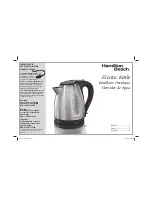
11
TEA INSIGHTS
11
Tea types
Based on the processing, we can distinguish four
basic types of the Chinese tea plant (lat. camellia si-
nensis). Collection and the method of fermentation
(oxidation of polyphenols which leads to chemical
changes in the tea leaves and causes them to darken)
determine the type of the tea i nally produced.
1. Black
Tea
Black tea is the most common type of tea
worldwide. It is made by fermenting the
harvested leaves for a couple of hours be-
fore heating or drying. This oxidation dark-
ens the leaves and increases the amount of
caf eine. Of all the teas, black tea has the
strongest colour and l avour.
2. White
Tea
White tea is the rarest and the most exclu-
sive tea. White tea consists of the whitish
buds of the tea plant which are steamed
then left to dry naturally. This tea is low in
caf eine and has a slightly sweet l avour.
3. Green
Tea
Green tea makes up approximately ten per-
cent of the world‘s tea. The leaves are picked,
rolled and dried before they can go brown.
Green tea has a distinctive aroma and has
a slight astringent taste.
4. Oolong
Tea
Oolong Tea is semi fermented, which means
leaves are processed immediately after
picking. They only have a short period of
oxidation which turns the leaves from
green to red/ brown. Its leaves have a l o-
ral, fruity quality and hence have a delicate
fruity taste. It is recommended not to drink
Oolong tea with milk, sugar or lemon.
5. Herbal infusions or Tisanes
Herbal infused teas are not produced from
the tea plant, but from l owers, leaves, roots
or seeds. Common herbal beverages are
chamomile, peppermint, fennel, rose hip,
and lemon verbena.
Herbal infusions that do not contain tea will
generally not become bitter with extended
brews. These can often be brewed with boil-
ing water 3 times without jeopardising the
taste.
6. Blends
Tea producers make blends by combining
dif erent types of teas, often in order to
achieve l avour consistency from one sea-
son to the next. Common black tea blends
include English Breakfast, Earl Grey, Irish
Breakfast, and Russian Caravan.
TIP:
Brewed tea leaves make an ideal garden
fertilizer and help condition the soil.
Tea storage
- Tea is very prone to absorb various aro-
mas and smells. To ensure good l avor and
aroma, tea should not get wet or come into
contact with light.
-
Teas stored inside a vacuum sealed bag can
be stored for up to two years, depending on
the quality and grade of tea. Once opened,
tea should be stored in an airtight container
and kept in a dry and dark place.
-
Once opened, black teas will last longer than
green and oolong teas but all tea needs to
be stored in ideal conditions.
-
You can tell when tea is past its best if it has
lost its aroma and will create either a bitter
or dull tasting cup.
Tips for optimal tea brewing
-
Water quality af ects taste. For best results,
use i ltered water.
- Finer tea particles and leaves will infuse
more quickly than whole leaves. As a re-
sult, i ner tea particles often release too
much tannin too quickly, creating a harsher
taste. Adjust the brewing time until desired
strength is achieved.
-
Automatic Tea Maker TM 8010 is provided
with a tea spoon which can be used to dose
tea leaves; use roughly one scoop of tea per
cup / 250ml of water.
Water to Tea Scoop Ratio
Glass Jug
Marking
Cups / ml
Tea Scoops
500 ml
Approx. 2 Cups
/ 500 ml
2 Scoops
750 ml
Approx. 3 Cups
/ 750 ml
3 Scoops
1000 ml
Approx. 4 Cups
/ 1000 ml
4 Scoops
1200 ml
Approx. 5 Cups
/ 1200 ml
5 Scoops
TEA INSIGHTS
Summary of Contents for TM 8010
Page 1: ...www sotmarket ru Catler TM 8010 8 800 775 98 98...
Page 2: ...AUTOMATIC TEA MAKER K E T T L E TM 8010 Instructions for use...
Page 3: ...AUTOMATIC TEA MAKER KETTLE...
Page 5: ...4 4 CONGRATULATIONS Congratulations on the purchase of your new Catler Tea Maker TM 8010...
Page 11: ...Tea Insights...
Page 13: ...Operating...
Page 21: ...20 Additional Features...
Page 25: ...Care and Cleaning...
Page 31: ...NOTE...
Page 32: ...NOTE...
Page 34: ...2 Catler TM 8010...













































